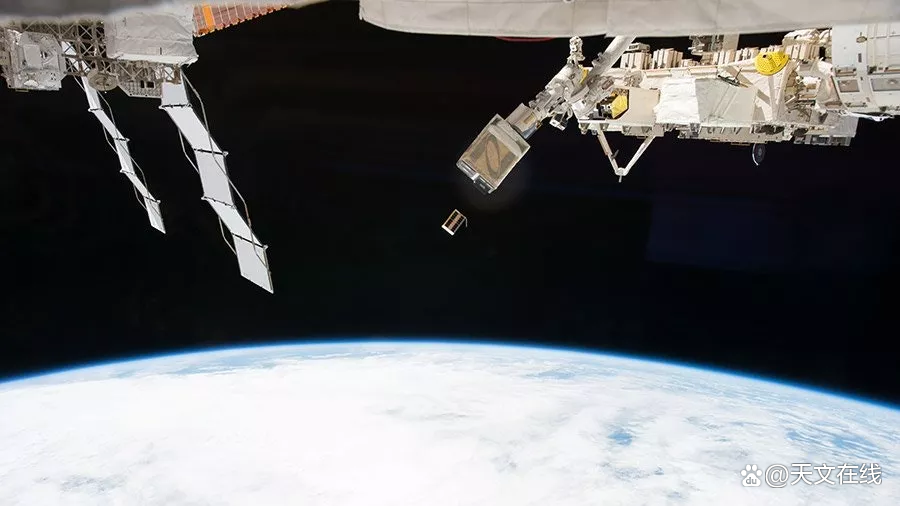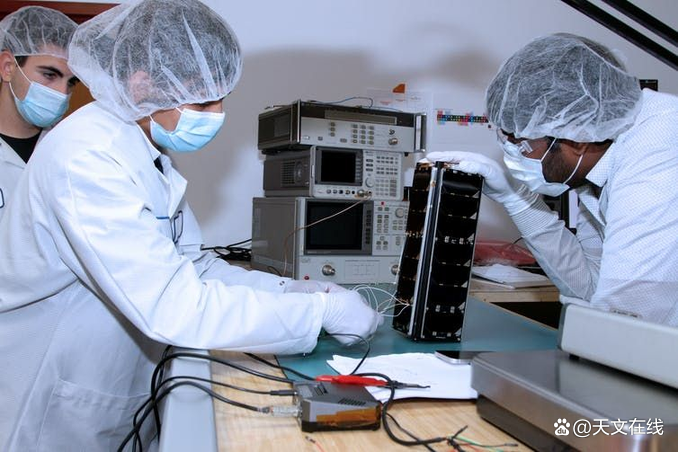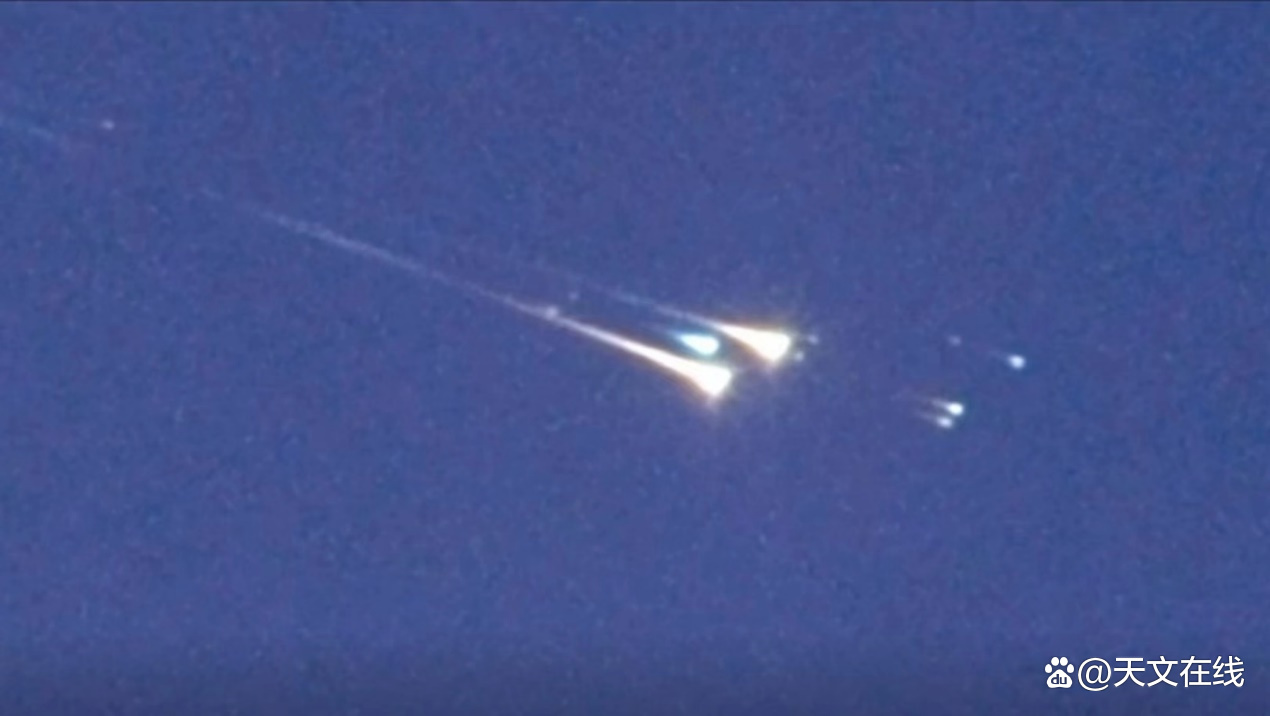How many satellites are on the road of the earth's orbit?There are a lot of answers
Author:Astronomy online Time:2022.08.07
Do you know how many satellites are turning around the earth?

(Picture source: NASA, CC by-NC)
Thousands of satellites running around the earth are small -just like this cube satellite released from the International Space Station.
(This article was originally published in the dialogue. The publication was written for "Space" magazine.)
Professor of Physics, the University of Massachusetts University of Massachusetts University of Massachusetes Lowell:
It seems that a rocket is launched to space every week, carrying tourists, Mars roaming, and the most common satellites. The idea of "more and more crowded" has been for several years, but how crowded the space is now? How crowded with it?

I am a professor of physics at the University of Massachusetts University of Loyer and also the director of the Space Science and Technology Center. Many satellites that were sent to the orbit have died and burned in the atmosphere, but thousands of satellites are still ready to go. The organization that tracks satellite launch does not always report the same exact number, but the overall trend is clear -and shocking.
Number of satellites running around the earth

(Picture source: dialogue)
Since the Soviet Union launched the first artificial satellite SPUTNIK in 1957, humans have steadily sent more and more objects into orbit every year. In the second half of the 20th century, the number of satellites increased slowly but stable. Until the early 2010s, about 60 to 100 satellites were launched each year.
But since then, the speed has been rising sharply.
As of 2020, about 1,300 satellites in 114 times were launched to space, and for the first time, it exceeded the record of 1,000 satellites in previous years. But in the past, it has not been able to compare to 2021 in the past. As of September 16, about 1,400 new satellites have begun to run around the earth. Over time, this number has only increased. Just this month, SpaceX deployed 51 Starlink satellites into the track.
The scale of technology is constantly narrowing, which produces a miniature satellite as if students work here.

(Image source: Edwin Aguirre/Universical of Massachusets Lowell, Edwin Aguirre/University of Massachusetts
Small satellites, easy to enter the track
There are two main reasons for this exponential growth. First, it is easy to send satellites into space. For example, on August 29, 2021, a SpaceX rocket transported several satellites (including a satellite built by my students) to the International Space Station. On October 11th, these satellites will be deployed to the track, and the number of satellites will increase again.
The second reason is that the Rockets are easier than ever, and they bring more satellites cheaper. This growth is not because the Rockets are becoming stronger. Instead, as the electronics revolution, satellites have become smaller. The vast majority (94%) of all spacecraft launched in 2020 are small satellites -less than 1320 pounds (600 kg).

Most of these satellites are used to observe the earth or communicate and the Internet. In order to promote the Internet to areas with insufficient global services, SPACEX's STARLINK and OneWeb private companies have launched nearly 1,000 small satellites in 2020. They each plans to launch more than 40,000 satellites in the next few years, and create the so -called "giant constellation" on the low -orbit of the earth.
Several other companies are paying attention to this $ 1 trillion market, the most famous of which is Amazon's Kuiper project.

Crowded sky
As the number of satellites increases, concerns about the crowded sky have begun to become a reality. One day after SpaceX launched the first batch of 60 Starlink satellites, astronomers began to see them blocked the stars. The impact on visible light astronomy is obviously easy to know. What is even more distressed is that radio astronomers are worried that due to the interference of satellite giant constellations such as Starlink, they may lose 70%of the sensitivity at some frequencies.
Experts have been studying and discussing the potential problems brought by these constellations, as well as methods for satellite companies to solve these problems. These measures include reducing the number and brightness of satellites, sharing satellite positions, and supporting better image processing software.
As the near -ground track becomes crowded, people's concerns about space fragments increase day by day, and the possibility of collision has increased.

Future trend
Ten years ago, space democracy was an unrealized goal. Now, as there are more and more student projects on the space station, and at least one satellite in more than 105 countries in space, people can say that the realization of this goal is just around the corner.
Each disruptive technological progress requires updating rules -or creating new rules. SpaceX has tested the method of lowering the impact of the star chain, and Amazon also revealed a plan to degenerate satellite within 355 days after the task was completed. These actions and other actions adopted by different stakeholders have allowed me to find sustainable solutions for business, science, and human efforts to find sustainable solutions for this potential crisis.
By: Supriya Chakrabartify: Forty-Seven
If there is related content infringement, please contact the author to delete after the work is released
Reprinted, please obtain authorization, and pay attention to maintaining integrity and indicating the source
- END -
If you can't fight China, you retire?The U.S. Navy will retire 39 warships in 9 months, and you need to be alert to selling it to the Taiwan army

A major problem in front of the US Navy in recent years is how to confront the Chi...
The United States provides Ukraine with US $ 1 billion in military assistance

Elephant reporter Chen Xiaoyu/CompilationAccording to the U.S. Hezhong Club, the U...